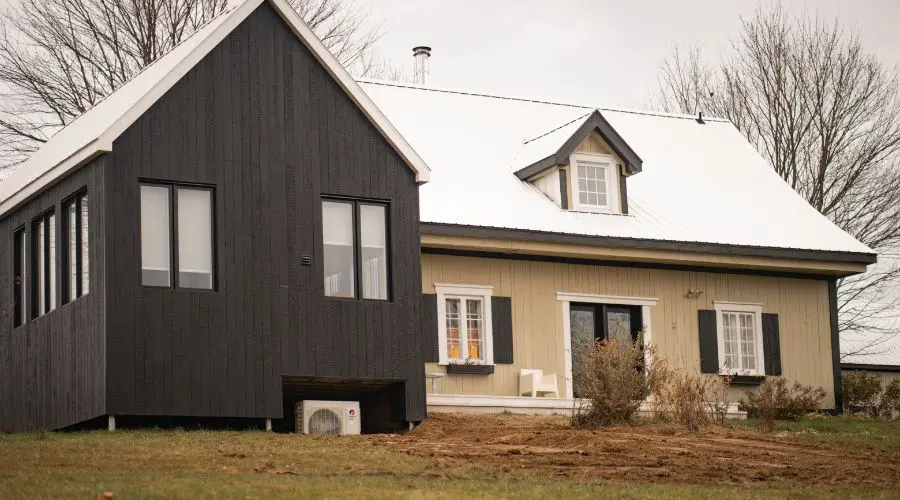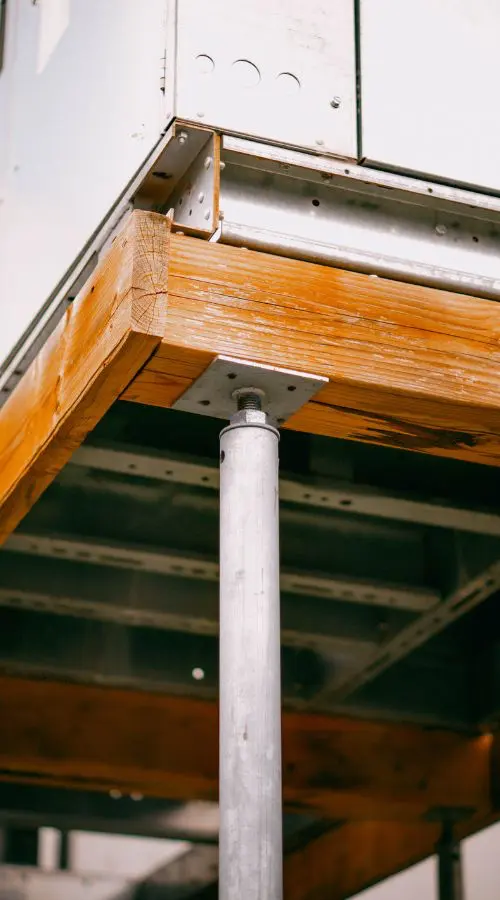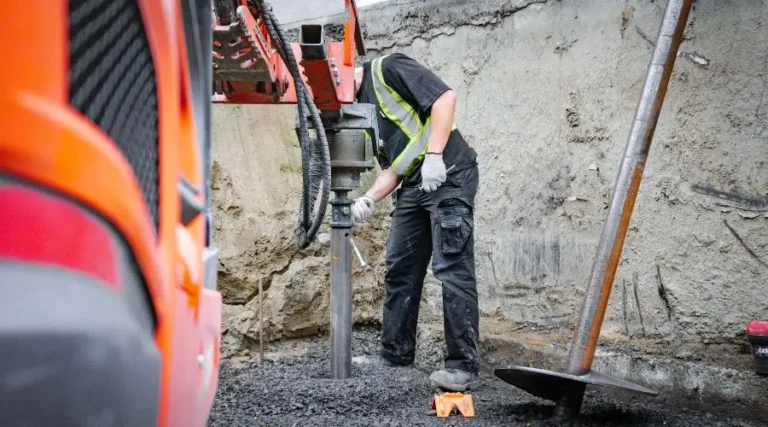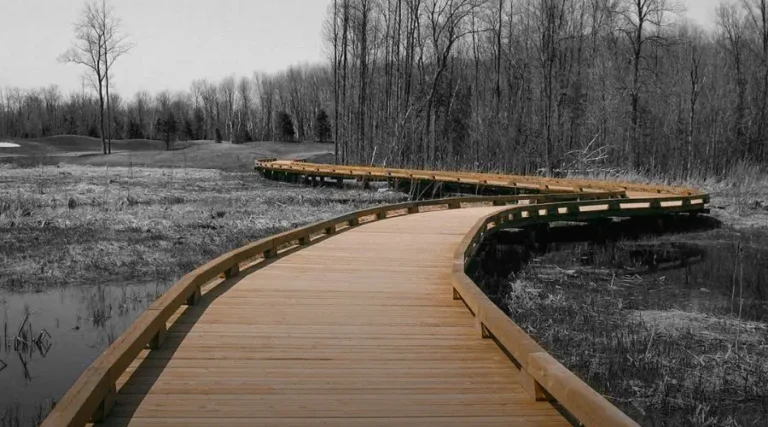Clay soil has a reputation for being tricky to build on due to its high degree of moisture and changes across seasonal fluctuations. Are helical piles a good foundation solution to use in clay?
Helical piles, also known as screw piles, can be effectively used in a variety of soil conditions including clay soil. Their design can be adapted to anchor firmly in cohesive clay, for instance.
- In this article, we take a closer look at the suitability of helical piles in clay soils, and explain everything you need to know.
Find out when and how screw piles are suitable for clay soil. Build decks, sheds, garages, home extensions and more on a stable foundation.

Is It a Good Idea to Use Screw Piles For Clay Soil?
You may have heard that screw piles can be installed in any type of soil, from loose sand to dense clay.
The techniques may vary from one type of soil to another, but helical piles are especially versatile. That explains why they have become popular as building foundations.
In fact, the cohesive nature of clay offers better lateral stability for helical piles.
What Are the Characteristics of Clay Soil?
Let’s try to understand what makes clay soil tricky for concrete foundations and why screw piles are a good fit in this type of soil.
Clay is often dense and cohesive. Because it expands and contracts easily (for example when water penetrates the soil), it can cause shifting in traditional concrete foundations. This does not happen with helical piles when they are installed deeper into the ground.
Loam is also partly made of clay. It is a mixture of sand, silt, and clay. In this mixture, clay does not cause construction challenges and loam is generally considered a well-draining and stable soil.
How Do Helical Piles Perform in Clay Soil?
Screw piles are particularly well-suited for clay soil. Here’s why:
- Clay is cohesive, which provides excellent grip for the helical blades of the screw pile as well as lateral stability.
- Screw piles maintain their structural integrity even when the soil shifts, for instance when moisture levels cause the clay to expand or contract.
- Screw piles are made from high-quality steel and can withstand extreme conditions.
- Helical piles cause less soil disturbance during installation. This reduces the risk of ground movement post-installation.
- Installation is fast and more cost-effective than traditional methods, especially in challenging soil conditions.
- Screw piles can be driven deeper to reach more stable soil layers, ensuring a secure foundation.
- Once the helical piles are installed, you can start building right away because they have immediate load bearing capacity.

What Type of Screw Piles Do You Need For Clay Soil?
There isn’t one type of screw pile that is specifically designed for clay soil. It’s important to always get an engineer to assess the soil conditions and determine the types of piles you need – which also depends on the load of the structure you’re building, for instance.
Screw pile specifications will account for clay’s unique properties. To install screw piles in clay you typically need to consider:
Pile shaft diameter
- Large diameter shafts (3 to 6 inches) have a better load distribution.
- Thick wall steel tubing is best to handle installation torque in dense clay.
Helix configuration
- Multiple helixes should be spaced 2 to 3 times the helix diameter apart.
- A diameter of typically 8 to 16 inches (depending on loads) is recommended.
- Smaller pitch (steeper angle) helixes work better in clay than in sand.
- The lead helix should be the largest, with progressively smaller helixes above.
Steel specifications
- Choose hot-dip galvanized steel for corrosion resistance (it is very important because clay is a moisture-retentive environment).
- Minimum yield strength of 50 ksi (kilopound per square inch) is recommended.
- Wall thickness should typically be 0.25 to 0.5 inches (depending on loads).
Screw Piles for Clay Soil: What Is the Proper Installation Depth?
Helical piles are typically installed deep in the ground, below the soil’s frost zone. This simple attribute protects your foundation from ground movement. Moreover, clay soils can experience significant moisture-related volume changes in the top layers. In clay, screw piles are often installed deeper than in other soil types.
What depth should you achieve in clay soil? Typical depth ranges are as follows:
- For most projects, the piles are installed 15 to 40 feet deep.
- Minimum depth is usually 10 to 12 feet.
- Higher structural loads require deeper penetration or larger helix plates.
In clay soil, the piles must penetrate through any soft or unstable layers to reach deeper, more stable layers. Stable layers of clay can be described as follows:
- Undisturbed clay with adequate bearing capacity.
- Clay with a firm to hard consistency.

What Are the Main Installation Considerations for Screw Piles in Clay Soil?
In any type of soil, a thorough soil analysis must be conducted before installation. It is crucial to determine the appropriate pile size, helix diameter, and depth for optimal performance.
During the installation process, torque needs to be carefully monitored to ensure proper anchoring. Installation continues until the required torque is achieved. In clay, this is less reliable than in other soils types. For more security, load testing is often recommended. Therefore, the contractor will stop when torque is reached, regardless of planned depth. They can dig deeper if needed.
By following these best practices for installation, screw piles can provide a reliable foundation solution in clay soil.
When To Use Screw Piles In Clay Soil?
You want to build a deck? A new shed is your next project? Your family would benefit from a garden room or small home extension? Screw piles can be used for a wide range of applications including:
- Decks
- Garages
- Garden rooms
- Sheds
- Home extensions
- Public piers
- Fences
- And more
They are a safe, quick, efficient, and cost-effective foundation solution for small, medium and heavy structures.
Choose Screw Piles For Clay Soil and Get a Very Stable Foundation!
Whether you’re working with dense or moist clay, screw piles offer a versatile and effective solution for your foundation needs. Their specific characteristics make them ideal to reach the most stable layers of the soil.
- Fill out our form to receive quotes from helical pile contractors in your area. It’s free and there’s no obligation to hire them afterwards.
Connect with up to 3 professionals who know how to handle clay soil conditions.


